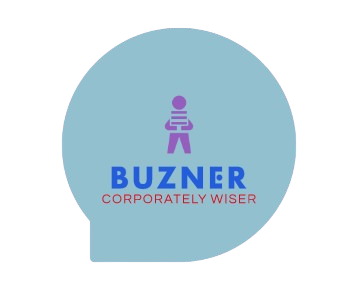Introduction
Effective performance management is crucial for
organizations to enhance productivity, engage employees, and achieve desired
outcomes. This article explores the key components of performance management,
including setting goals, providing feedback, and driving results. By
implementing effective performance management strategies, businesses can
optimize individual and team performance, leading to overall organizational
success.
Understanding Performance Management
Performance management is a systematic process that involves
defining expectations, assessing performance, and providing feedback to enhance
employee productivity and development. It encompasses various elements such as
goal setting, performance evaluation, feedback, coaching, and development.
·
Definition
of Performance Management
Performance management can be defined as the ongoing process
of planning, monitoring, and reviewing employee performance to ensure alignment
with organizational goals and objectives. It involves creating a
performance-driven culture where employees understand expectations, receive
regular feedback, and have opportunities for growth.
·
Key
Components of Performance Management
Performance management comprises several key components,
including:
1. Clear goal setting: Defining specific, measurable, achievable, relevant, and time-bound (SMART) goals that align with organizational objectives.
2. Continuous feedback: Providing regular feedback and constructive guidance to employees to enhance their performance.
3. Performance evaluation: Conducting formal performance reviews and appraisals to assess individual and team achievements.
4. Performance improvement: Addressing performance issues through effective communication, coaching, and development plans.
5. Rewards and recognition: Linking performance to rewards and recognition to motivate and incentivize employees.
6. Tools and technologies: Utilizing performance management software, dashboards, and analytics to track and measure performance metrics.
The Importance of Setting Goals
Setting goals is a fundamental aspect of performance
management as it provides employees with clear direction and focus.
Well-defined goals serve as a roadmap for success, guiding employees’ efforts
towards desired outcomes.
·
Goal
Setting and Employee Performance
When employees have clear goals, they are more likely to
understand expectations, prioritize tasks, and channel their efforts
effectively. Setting challenging yet attainable goals can motivate individuals
to stretch their capabilities and achieve higher levels of performance.
·
Characteristics
of Effective Goals
Effective goals share certain characteristics that contribute to their success:
1. Specific: Goals should be specific and clearly defined to avoid ambiguity.
2. Measurable: Goals should be measurable, allowing progress to be tracked and evaluated.
3. Achievable: Goals should be realistic and attainable, considering individual capabilities and available resources.
4. Relevant: Goals should be aligned with the overall objectives of the organization and the individual’s role.
5. Time-bound: Goals should have a defined timeline or deadline to create a sense of urgency and focus.
·
SMART
Goals: Specific, Measurable, Achievable, Relevant, Time-bound
The SMART framework is a widely recognized approach for
setting effective goals. SMART goals ensure that objectives are clear,
trackable, and meaningful. By applying the SMART criteria, managers can set
goals that lead to improved performance and desired outcomes.
Providing Continuous Feedback
Feedback is a powerful tool in performance management that
helps individuals understand their strengths, areas for improvement, and
progress towards goals. Continuous feedback fosters a culture of open
communication and supports ongoing growth and development.
1.
The Role of
Feedback in Performance Improvement
Feedback plays a critical role in performance improvement
by:
- Acknowledging achievements and reinforcing positive behaviors.
- Identifying areas for improvement and providing guidance for development.
- Clarifying expectations and aligning employee efforts with organizational goals.
- Strengthening the manager-employee relationship and fostering trust and engagement.
2.
Types of
Feedback
There are various types of feedback that managers can
provide to support employee growth:
- Constructive feedback: Offering specific, actionable suggestions for improvement.
- Positive feedback: Recognizing and acknowledging employees’ achievements and contributions.
- Developmental feedback: Providing guidance and resources to enhance skills and capabilities.
- Timely feedback: Offering feedback promptly after an event
or performance to maximize its impact.
3.
Effective
Feedback Techniques
To ensure the effectiveness of feedback, managers can employ
the following techniques:
- Be specific: Provide detailed feedback that focuses on specific behaviors or outcomes.
- Balance strengths and weaknesses: Acknowledge strengths while addressing areas for improvement.
- Offer solutions: Suggest solutions or strategies for overcoming challenges and improving performance.
- Encourage dialogue: Foster two-way communication by inviting employees to share their perspectives and insights.
- Be supportive: Create a supportive and non-threatening environment that encourages growth and learning.
Performance Reviews and Appraisals
Performance reviews and appraisals are formal assessments
conducted to evaluate an employee’s performance over a specific period. These
evaluations provide a comprehensive overview of an individual’s achievements,
strengths, and areas for improvement.
1.
Conducting
Performance Reviews
Performance reviews typically involve the following steps:
- Preparation: Collect relevant performance data, including goal progress, feedback, and key accomplishments.
- Schedule the review: Set a mutually convenient time to discuss the performance evaluation.
- Facilitate a discussion: Engage in an open and constructive dialogue, discussing strengths, areas for improvement, and future goals.
- Document the review: Record key points discussed during the performance review for reference and future actions.
- Follow-up: Establish action plans, development opportunities, and next steps to support employee growth.
2.
Performance
Appraisal Methods
There are various performance appraisal methods that
organizations can adopt based on their specific needs and requirements. Some
common methods include:
- Rating scales: Assigning numerical or descriptive ratings to evaluate performance against predetermined criteria.
- Behavior-based assessments: Assessing employee behaviors and competencies against predefined standards.
- 360-degree feedback: Collecting feedback from multiple sources, including peers, subordinates, and supervisors.
- Self-assessment: Allowing employees to evaluate their own performance and provide insights into their strengths and areas for improvement.
- Critical incidents method: Documenting specific examples of exceptional or problematic behavior for evaluation.
Addressing Performance Issues
Addressing performance issues promptly and effectively is
crucial for maintaining productivity and ensuring individual growth. When
performance falls below expectations, it’s essential to identify the root
causes and implement strategies to support improvement.
Identifying Performance Issues
Identifying performance issues requires careful observation
and assessment. Common signs of performance issues include:
- Missed deadlines or incomplete tasks
- Decline in quality of work
- Lack of initiative or motivation
- Increased conflict or negative behavior
- Consistent feedback indicating areas for improvement
Performance Improvement Plans
Performance improvement plans (PIPs) are structured interventions designed to help employees overcome performance challenges. PIPs involve:
- Identifying the performance gap: Clearly articulating the gap between current performance and desired expectations.
- Establishing improvement goals: Collaboratively setting specific and measurable objectives to address performance issues.
- Providing support and resources: Offering necessary guidance, training, or coaching to support improvement efforts.
- Regular monitoring and feedback: Continuously tracking progress, providing feedback, and adjusting strategies as needed.
Coaching and Development
Coaching plays a pivotal role in performance management,
focusing on individual development and unlocking potential. Effective coaching
helps employees enhance their skills, overcome challenges, and achieve their
professional goals.
1.
Coaching
for Performance Improvement
When coaching employees for performance improvement,
managers can:
- Clarify expectations: Clearly communicate performance expectations and align them with individual goals.
- Identify strengths and areas for improvement: Conduct assessments to identify strengths and areas that require development.
- Set development goals: Collaborate with employees to establish specific, actionable goals for skill enhancement.
- Provide guidance and feedback: Offer ongoing support, feedback, and resources to facilitate growth.
- Encourage self-reflection: Promote self-awareness and self-reflection to drive continuous improvement.
2.
Development
Opportunities for Employees
Organizations should provide development opportunities to
help employees enhance their skills, knowledge, and abilities. These
opportunities can include:
- Training programs: Offering workshops, seminars, or online courses to build specific skills.
- Mentoring and coaching: Pairing employees with experienced mentors or coaches to provide guidance and support.
- Job rotations: Exposing employees to different roles and responsibilities to broaden their skill set.
- Professional certifications: Supporting employees in obtaining industry-recognized certifications to enhance their expertise.
- Performance-driven projects: Assigning employees to projects that challenge them and offer opportunities for growth.
Driving
Results through Performance Management
Performance management is not just about assessing and
improving individual performance; it is also about aligning individual goals
with organizational objectives to drive overall results.
· Aligning
Individual Goals with Organizational Objectives
When individual goals are aligned with the organization’s
strategic objectives, it creates a sense of purpose and direction for
employees. By understanding how their work contributes to the bigger picture,
individuals are motivated to perform at their best.
·
Linking
Performance to Rewards and Recognition
Rewarding and recognizing high performance is an essential
aspect of performance management. By linking performance to rewards such as
salary increases, bonuses, promotions, or other incentives, organizations can
reinforce desired behaviors and motivate employees to achieve their goals.
Tools
and Technologies for Performance Management
Several tools and technologies are available to support
effective performance management processes.
·
Performance
Management Software
Performance management software provides a digital platform
for organizations to streamline and automate performance management activities.
These tools often include features such as goal setting, feedback management,
performance appraisal, and reporting.
·
Performance
Dashboards and Analytics
Performance dashboards and analytics tools enable
organizations to track and visualize performance metrics, allowing managers to
monitor progress, identify trends, and make data-driven decisions. These tools
provide valuable insights into individual and team performance.
Best
Practices in Performance Management
To ensure the effectiveness of performance management,
organizations should follow best practices that promote continuous improvement
and employee engagement.
·
Regular
Check-ins and Communication
Encourage regular check-ins between managers and employees
to discuss progress, provide feedback, and address any concerns. These frequent
conversations help maintain open lines of communication and allow for timely adjustments.
·
Continuous
Learning and Development
Promote a culture of continuous learning and development,
offering opportunities for skill enhancement and professional growth. Support
employees in acquiring new knowledge and competencies that align with their
career aspirations and the organization’s needs.
·
Ongoing
Performance Evaluation
Performance evaluation should be an ongoing process rather
than an annual event. Regularly assess performance and provide feedback to
ensure alignment with goals and address any emerging issues promptly.
Conclusion
Effective performance management is a critical driver of
organizational success. By setting clear goals, providing continuous feedback,
addressing performance issues, and driving results, organizations can optimize
individual and team performance. Performance management promotes a culture of
accountability, growth, and engagement, leading to improved productivity,
employee satisfaction, and overall business outcomes.







